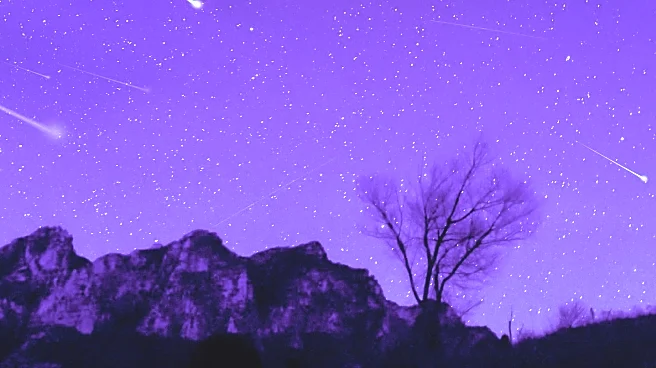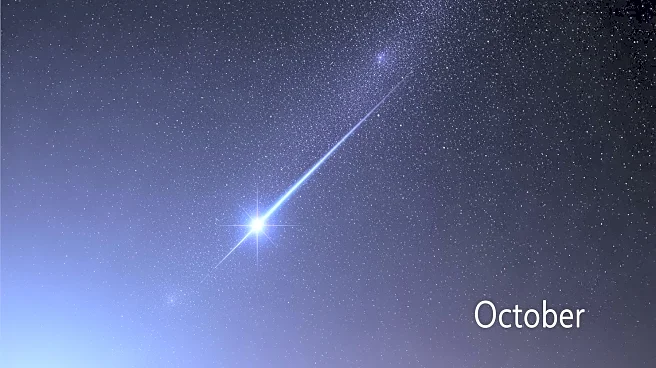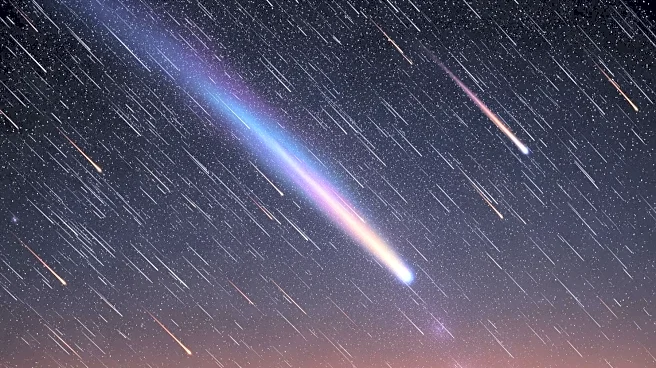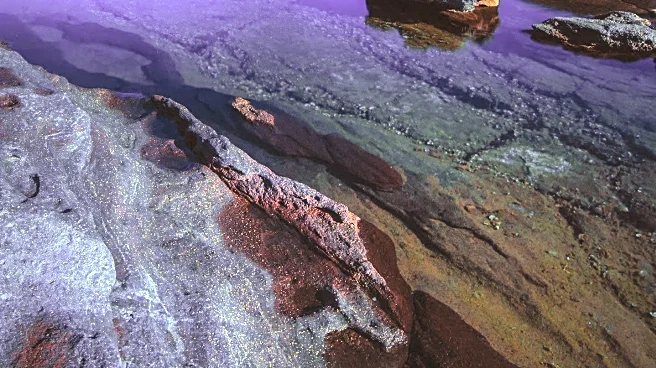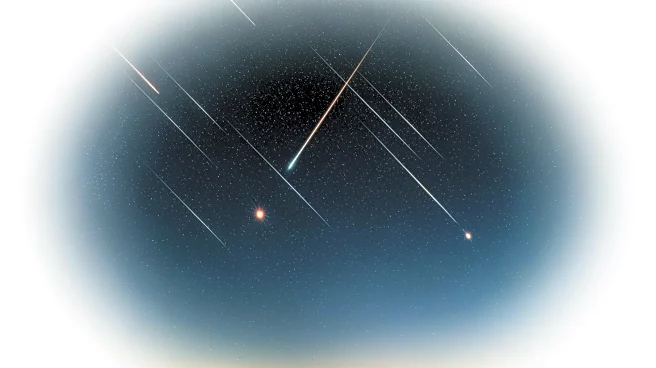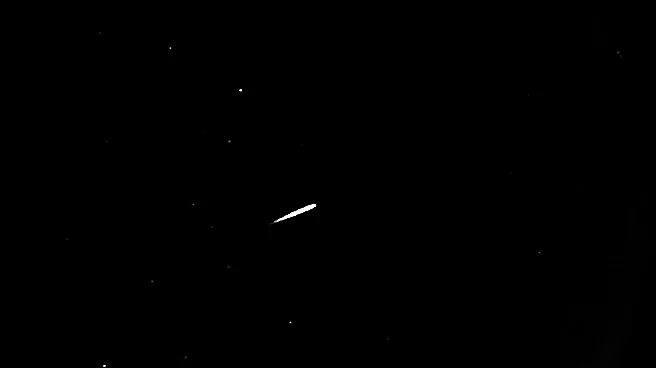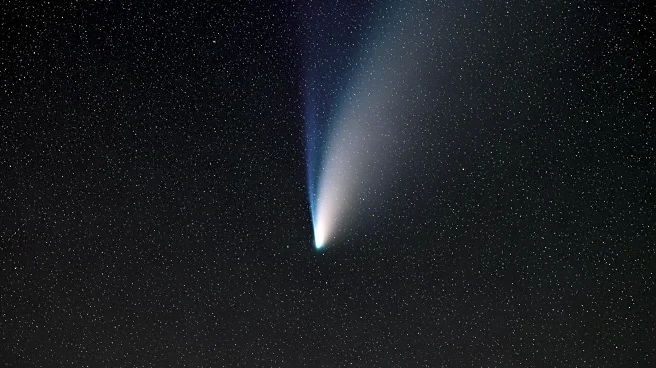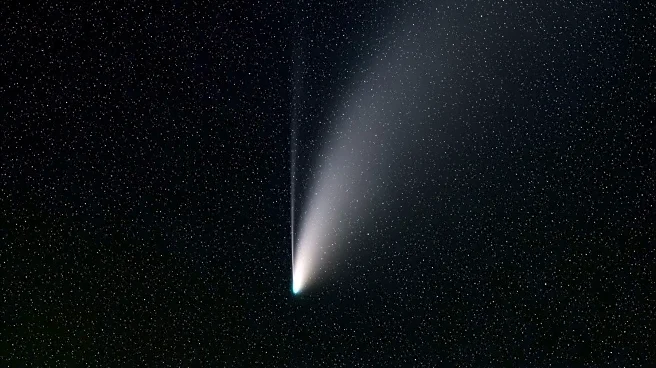What's Happening?
The Orionid meteor shower, an annual celestial event caused by debris from Halley's Comet, is set to peak on October 20-21, 2025. This year, the shower coincides with a new moon, providing dark skies ideal
for viewing. The Orionids, known for their speed of 66 kilometers per second, are expected to produce around 20 meteors per hour. The radiant point of the shower is located near the star Betelgeuse in the constellation Orion. Observers in both the Northern and Southern Hemispheres can enjoy the display, with the best viewing times occurring in the pre-dawn hours.
Why It's Important?
The Orionid meteor shower offers a unique opportunity for skywatchers to observe a meteor display under optimal conditions due to the absence of moonlight. This event not only provides a spectacle for astronomy enthusiasts but also serves as a reminder of the ongoing influence of Halley's Comet, which last visited the inner solar system in 1986. The shower's visibility from both hemispheres makes it accessible to a wide audience, fostering interest in astronomy and the natural world.
What's Next?
As the Orionid meteor shower peaks, observers are encouraged to find dark, rural locations to maximize their viewing experience. The shower will continue to be visible until early November, with stragglers appearing sporadically. The next significant celestial event involving Halley's Comet will be the Eta Aquariid meteor shower in May 2026. Meanwhile, astronomers and enthusiasts will continue to monitor and study the debris trails left by Halley's Comet, contributing to our understanding of cometary behavior and its impact on Earth's atmosphere.
